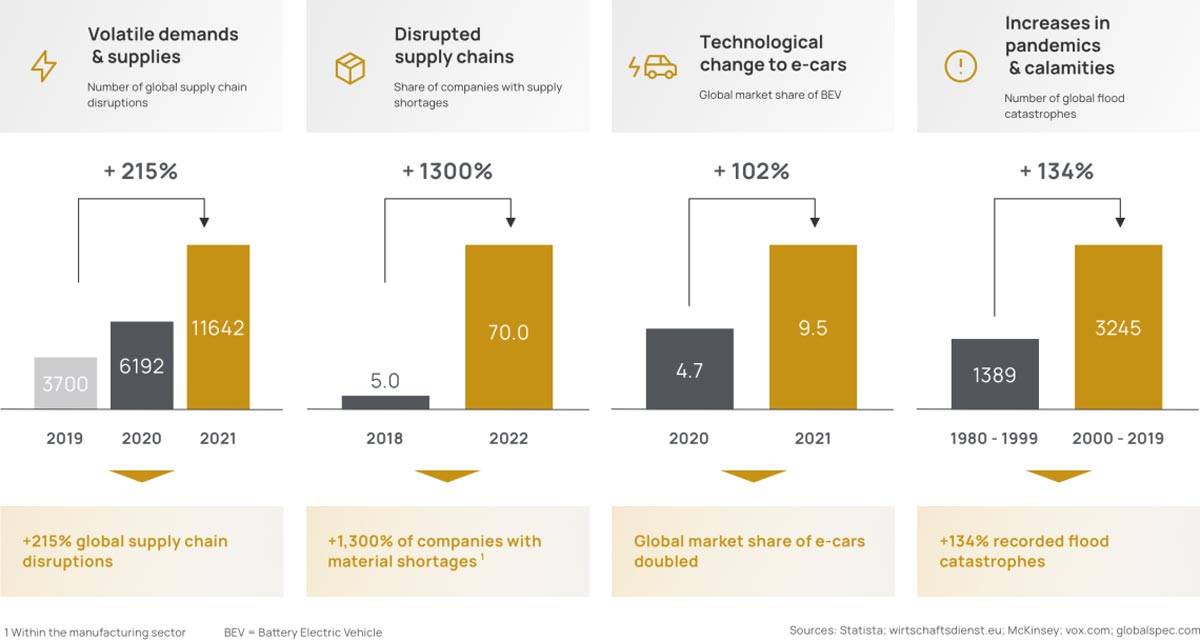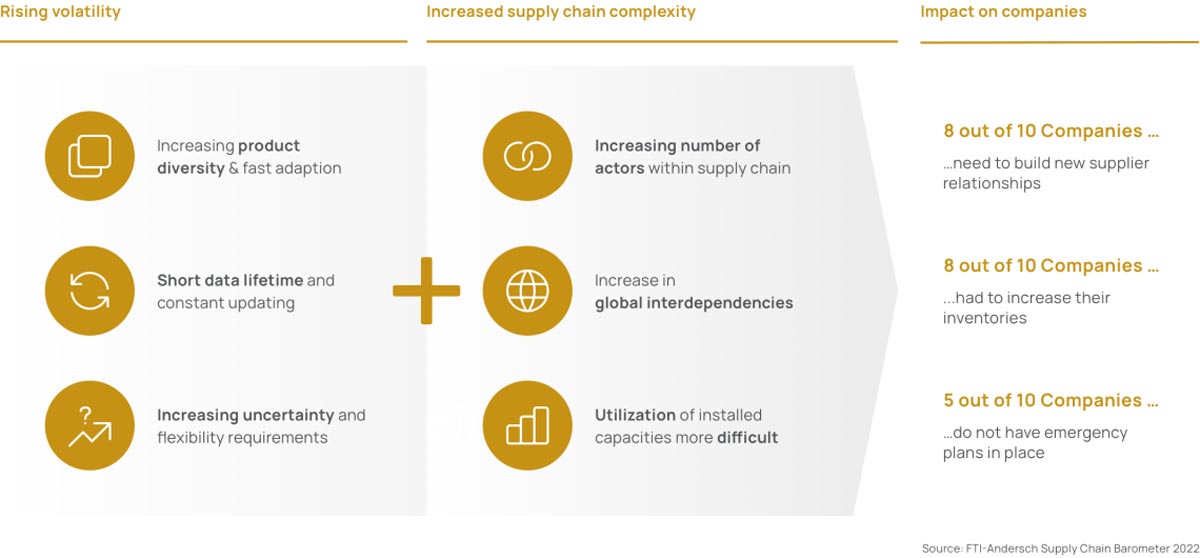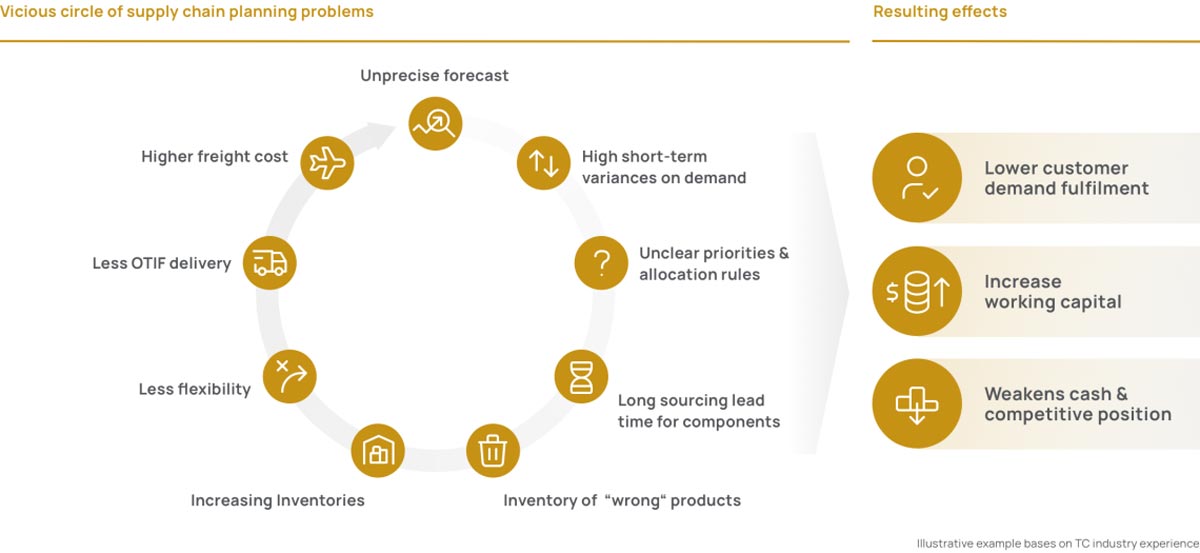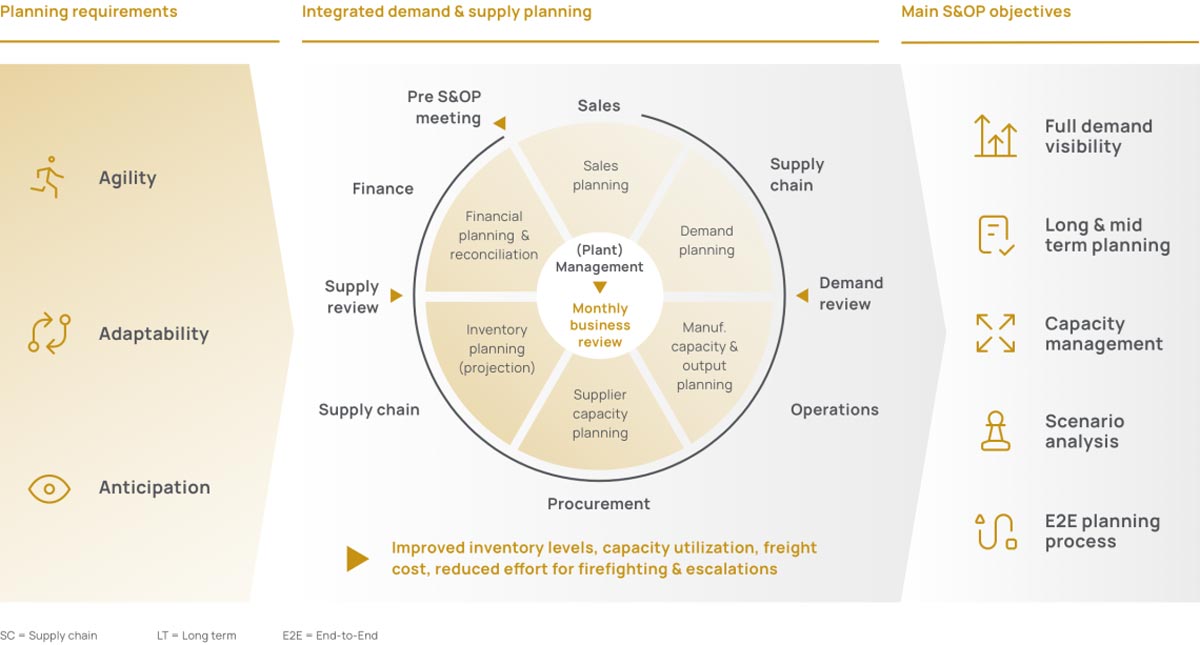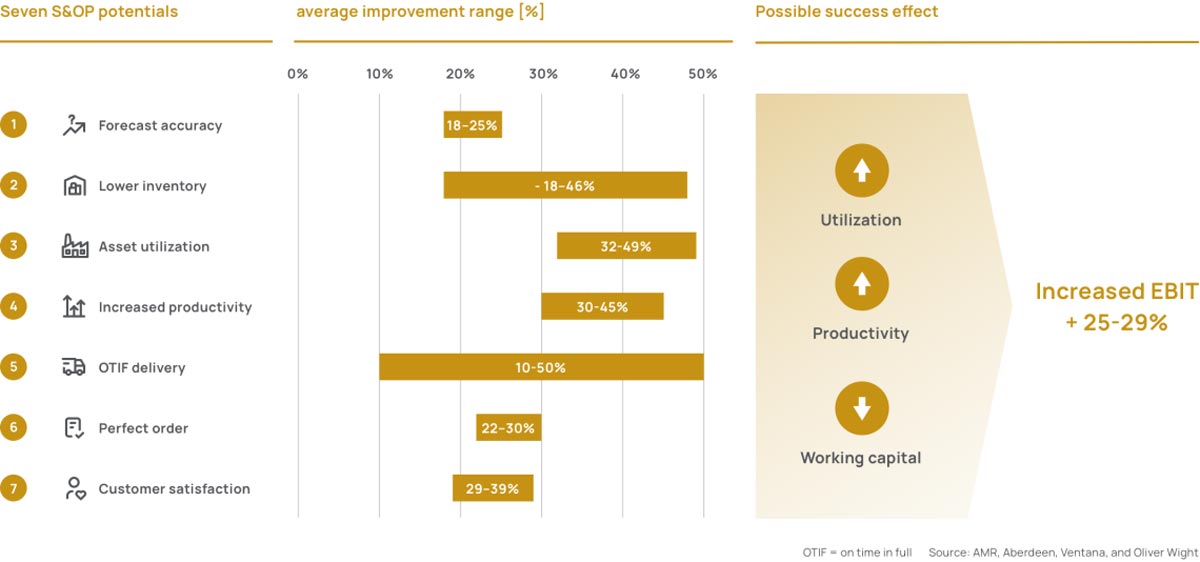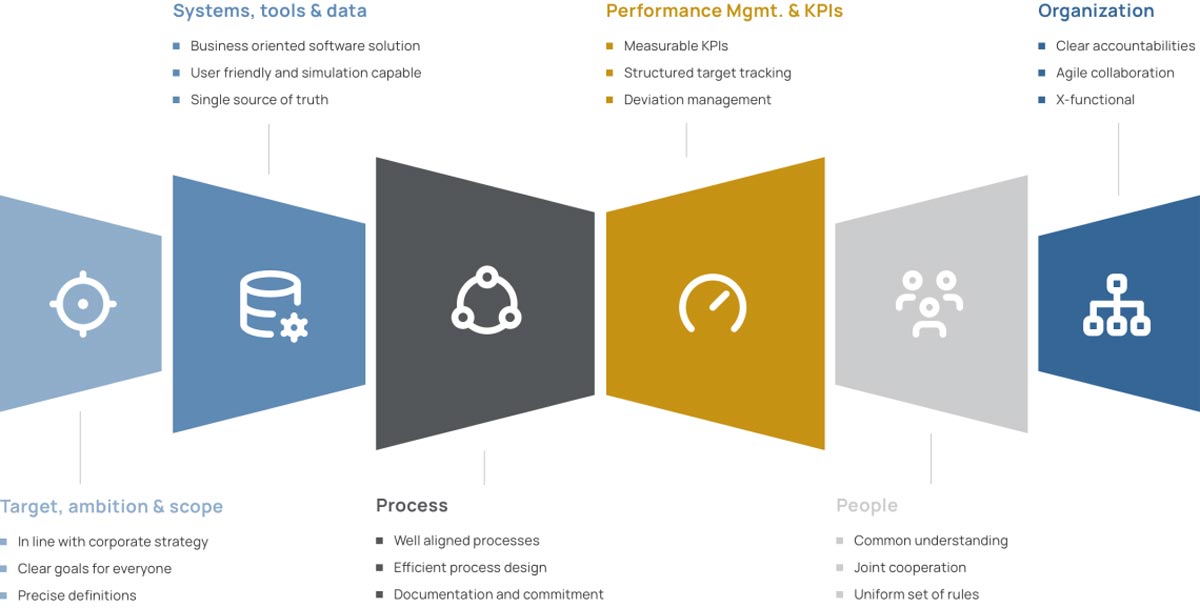Many companies are lacking professional planning and forecasting processes, leading to sharp capital commitment increases
Companies are often insufficiently able to handle increased market volatility and complexity of supply chains with their current planning systems. This is mostly visible through the number of special freights, decreasing OTIF and at the same time increasing inventory levels. Ultimately, this has a strong impact on customer demand fulfillment and the erosion of free cash flow through an increase in working capital. Companies need to optimize their planning and forecasting processes to tackle root causes to reduce their current capital commitments.
How to handle challenges of volatile demand and complex SC?
Integrated supply and demand planning is the key to fulfilling the requirements of a high agile, adaptable and participative planning process. In this context, long term planning is initiated with sales and supply chain forecasting, i. e. the specific demand is determined and compared with production, inventory, and supplier capacities. This planning cycle must be carried out in a rolling monthly cycle and anchored as a fixed business review. Integrated S&OP is designed to carry out this rolling process to balance supply and demand. Consequently, improved and accurate forecasting lead to higher efficiencies in the subsequent processes.
What can potentially be achieved?
Based on market studies and our experience, significant improvements in a wide range of key areas can be achieved through a professional and integrated S&OP process. For example, improved forecasting and planning accuracy reduced inventory between 18-46% and increased asset utilization between 32-46%. Overall, companies can boost their EBIT by over 25% with the introduction of a professional S&OP process.
What are the success factors?
In our experience, it is a common mistake that S&OP is too often understood as a pure IT project. For us, a holistic S&OP concept must be driven by the business and needs to consider six management aspects. Planning should be centralized with the help of S&OP and carried out with one system. It is important to adapt the organizational framework, such as monthly business reviews. On top, a holistic S&OP process covers three different time horizons:
- 0-3 months (operational)
- 3-18 months (tactical)
- > 18 months (strategical)
We implement S&OP concepts holistically with our proven TSETINIS-EFESO approach.



